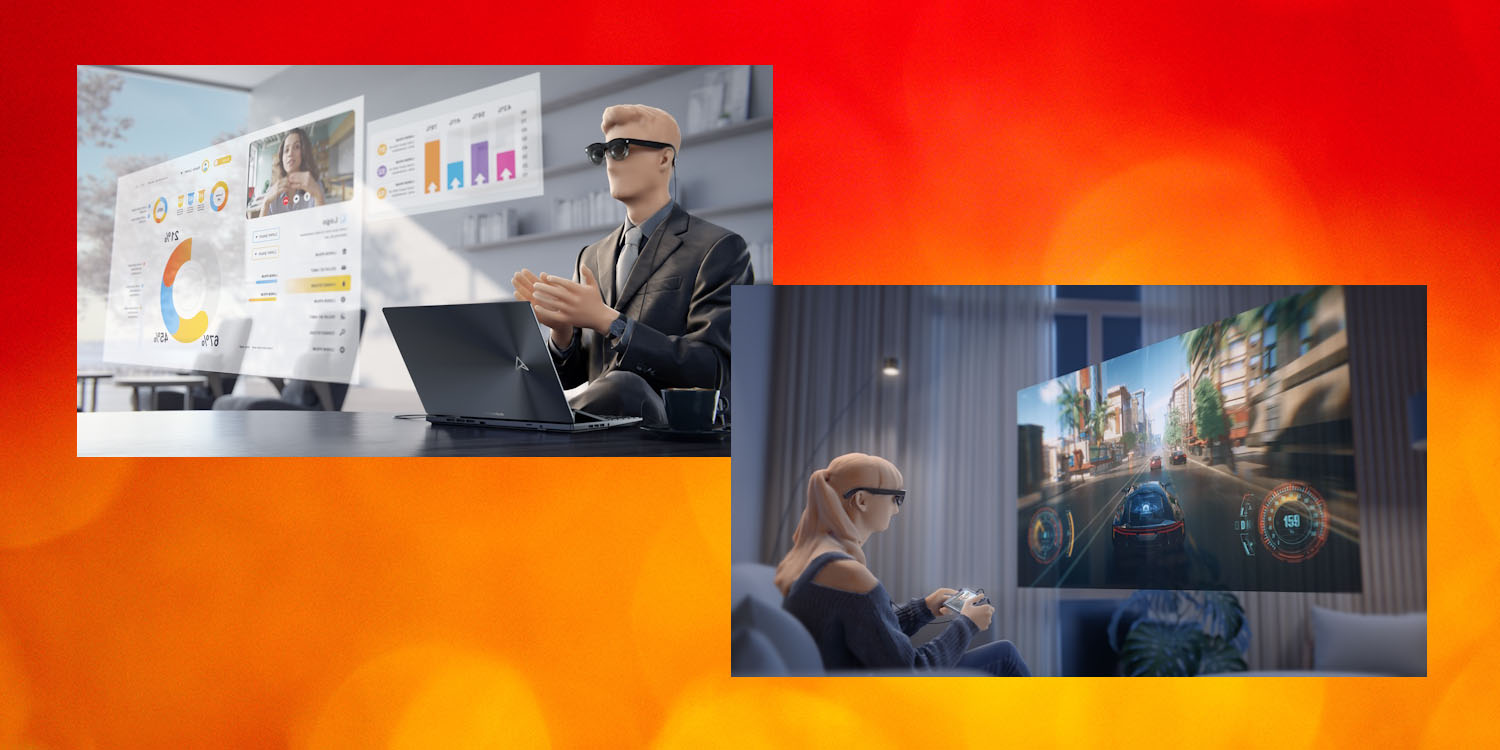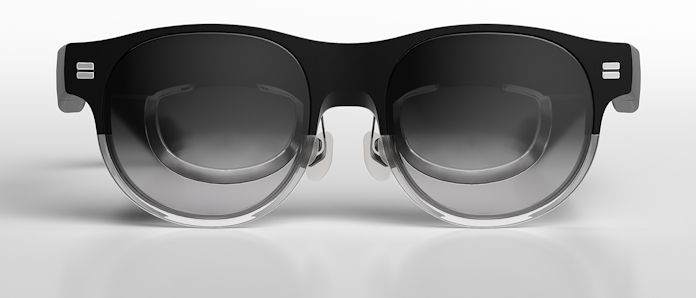
We’re seeing a succession of companies announce headset or glasses products at CES 2024, with the ASUS AirVision M1 glasses the latest of these.
So far, none of the three companies to announce have sought to take on Vision Pro with a truly comparable product, and the AirVision M1 glasses don’t change that …
The story so far
The $699 Xreal Air 2 Ultra kicked things off on Monday, and we noted then that it’s effectively an external monitor rather than a spatial computer.
Xreal’s device can only be used while tethered to a computer, console, or Phone. It’s a spatial monitor, not a spatial computer.
As the name suggests, the new device is the latest iteration of the existing Xreal Air 2 and Air 2 Pro. As with its predecessors, it’s a pair of augmented reality glasses which simply serve as an external display to a Mac, PC, games console, or Android device.
But for anyone wanting to squeeze large external Mac monitors into a highly portable device, it could be a good solution – costing a fifth of the price of Vision Pro, and likely a lot more comfy to wear for extended periods.
Sony’s no-name, no-price, no-availability date headset is aimed firmly at the enterprise market, and while it sounds like it will have much more sophisticated capabilities, it needs to be powered by an external PC.

ASUS AirVision M1 glasses
The latest company to announce its vision product is ASUS. The AirVision M1 (above) does have a name, but lacks pricing or launch date.
This is similar to the Xreal glasses in being a spatial monitor rather than spatial computer, and the company pitches it as just that.
This display wears like a pair of glasses, giving you the screen real estate you need without demanding additional space on your lap, table, or airplane tray table. Micro OLED display tech gives you an incredible visual experience in a tiny package.
Its FHD resolution delivers crisp, readable text, while the display’s dazzling 1100-nit peak brightness keeps images clear and readable even in environments with plenty of natural light. Low response times minimize blur as you’re gaming, watching fast-paced content, or simply scrolling through your social media feed, while 95% coverage of the cinema-grade DCI-P3 color gamut ensures vibrant, saturated colors.
Note that ‘Full HD’ reference: the display here is a rather basic 1920×1080 one. That being the case, we’d expect these to be priced below the Xreal glasses.
There’s also bad news for Mac owners hoping to use it: From the description, it sounds like these will only fully work with Windows PCs.
You can use our Windows app to set up multiple virtual screens and place content on them just like you would with multiple physical displays on the desk in your home office. These advanced virtual screen options rely on our Windows software, but they’ll greatly expand what you can do when the AirVision M1 wearable display is connected to your PC.
It does have one thing in common with Vision Pro, though.
We even include a cleaning cloth.
So far, there’s a trend
In the CES vision product announcements to date, then, we’re seeing a trend: Companies are taking advantage of the Vision Pro hype to generate interest in their products, but nobody is yet directly taking on Apple.
Both Xreal and ASUS have announced spatial monitor products, which addresses one of the usage cases of Vision Pro, but only one. Sony is aiming at the industrial market, but again, it’s a PC peripheral rather than a standalone device.
What Vision Pro offers is a device which, sure, can act as a spatial monitor, but it also runs its own apps. No computer or phone is required. Apple’s device essentially bridges existing VR headsets like the Meta Quest series with spatial monitor products like these.
To be clear, the products we’ve seen announced are potentially competitive devices, in that some potential Vision Pro buyers really just want a spatial monitor for their Mac, and have little interest on running VR apps on the headset itself. But it’s still interesting that nobody as yet is attempting to go fully head-to-head with Vision Pro.
9to5Mac composite; ASUS photos; background by Alexander Grey on Unsplash
FTC: We use income earning auto affiliate links. More.



Comments